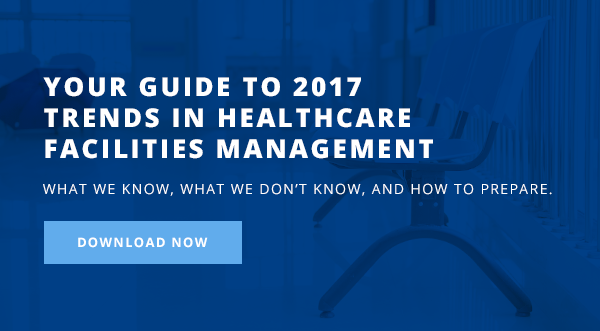One of the challenges of being a healthcare contractor is the range of priorities for which you are responsible. Not only do you have to be involved in the overall design and planning of the hospital construction or renovation project, but in many cases you also deal with contracts, hiring, and safety -- and that last piece should never be an afterthought.
This week, we wanted to recognize Construction Safety Week by updating our healthcare construction worker safety data for 2017.
According to the Bureau of Labor Statistics, there were 937 construction industry worker deaths in 2015, marking a 4% increase over data from 2014 and the largest number of construction worker deaths since 2008. In 2015, construction industry deaths accounted for slightly less than 20% of all worker deaths, making it the fourth highest fatal injury rate.
Falls, slips and trips were the primary cause of death for construction workers once again, with 364 reported. Transportation, contact with objects or equipment, and exposure to harmful substances fill in the top 4 fatality causes, accounting for a total of 518 deaths.
As construction teams continue to work in the coming year, safety training will be critical at all levels to keep fatality rates from rising once again. Keep reading for more on what healthcare construction site safety looks like 2017 and how you can ensure your own team’s safety.
All Workers are Responsible for Safety
No matter what the hierarchy is at a particular job site, in order for any safety measures to truly make a difference, every worker must be responsible for maintaining safety standards. During a healthcare construction project, nearly everyone will be busy, which means that even site supervisors will not have time to check and doublecheck every standard of safety. It is important to empower workers at every level to advocate for and ensure safety.
For new workers, this means requiring safety orientations and training, as we will discuss below. However, it also means making sure that every worker knows that they will not be punished or penalized for reporting a safety error. New workers especially can be reluctant to report an issue that may cause a delay in work, so establishing safety as an ultimate priority is important from day 1.
Training is Critical
Safety training is an essential part of maintaining a safe work environment at a healthcare construction site. New workers should be trained on safety protocols and seasoned workers should have their safety knowledge regularly tested and refreshed, as well. Further, those workers that are conducting the training should be regularly trained too, with fresh safety protocol and best practices continually made available. When workers’ knowledge is not refreshed, it becomes easy to let standards slip and this is how dangerous and even deadly accidents can occur.
OSHA’s ‘Fatal Four’
OSHA has identified four top causes of construction worker death and dubbed them the “Fatal Four," which caused 64.2% of all construction worker deaths in 2015. They are:
- Falls — 364 deaths in 2014 (38.8%)
- Electrocutions — 81 deaths (8.6%)
- Struck by Object — 90 deaths (9.6%)
- Caught-in/between— 67 deaths (7.2%)
By successfully addressing these top issues, the construction industry as a whole could prevent more than 600 worker deaths.
More than 1 in 3 construction worker fatalities in 2015 were the result of falls. In 2016, OSHA promoted the 2016 National Safety Stand-Down to Prevent Falls in Construction. Unfortunately, this campaign has not yet led to a decrease in falls, so the campaign is being repeated next week. According to the US Department of Labor, the Stand Down is "a voluntary event for employers to talk directly to employees about safety. Any workplace can hold a stand-down by taking a break to focus on Fall Hazards and reinforcing the importance of Fall Prevention."
Hospital Construction Means Patients Matter, Too
Job site safety is critical for all construction projects when it means saving workers from falls and other injuries while also keeping timelines moving forward. However, in the healthcare industry there is also patient safety to consider. Of course, patients should not actually be present in a serious construction site, but when it comes to hospital renovations, construction workers can often be in close proximity to operating portions of the facility. In these cases, it is essential that workers be trained in patient safety and comfort in addition to standard construction site safety. This may include the use of portable dust containment units, noise reducing technology, separate worker entrances, and making other accommodations for patients.
While technology will continue to develop and change the shape of how healthcare construction projects are completed, worker safety will always be a top concern, and addressing that concern starts at the top. Every worker must be well aware that your company sees safety as a top priority, at every level. With the support of every worker on the job, safer sites and better statistics are in store.
